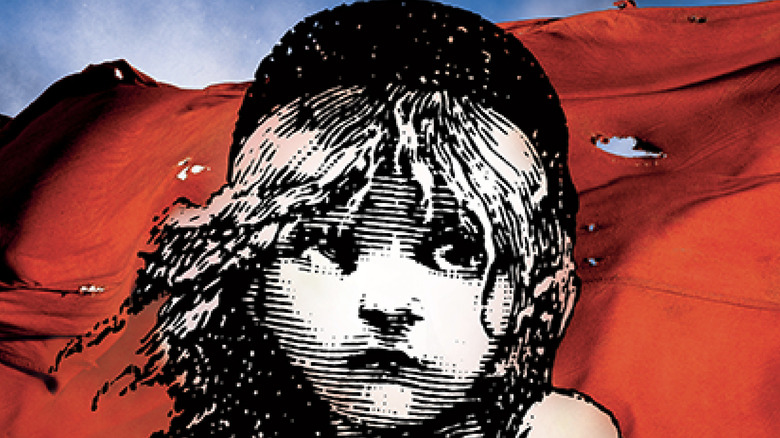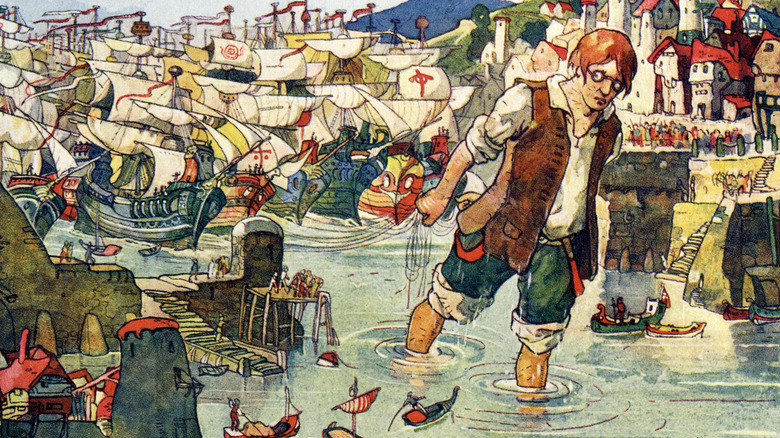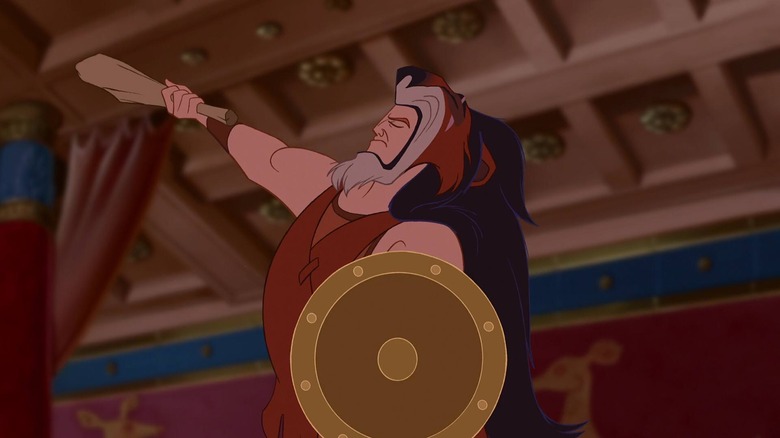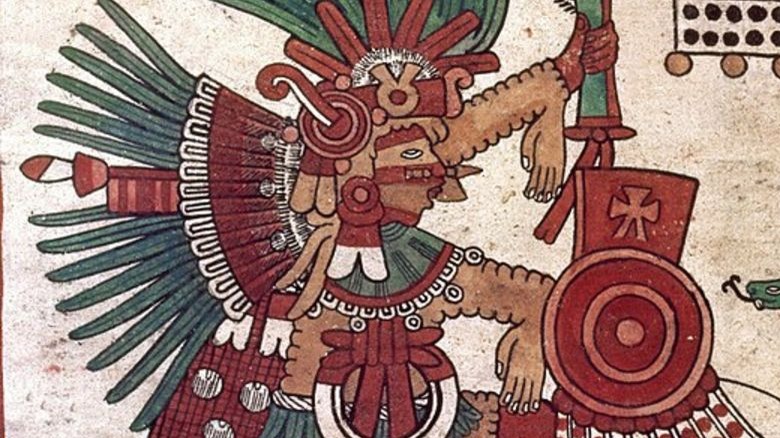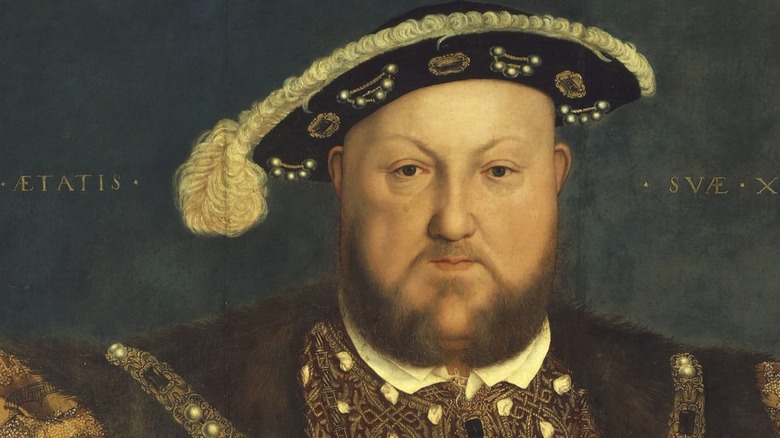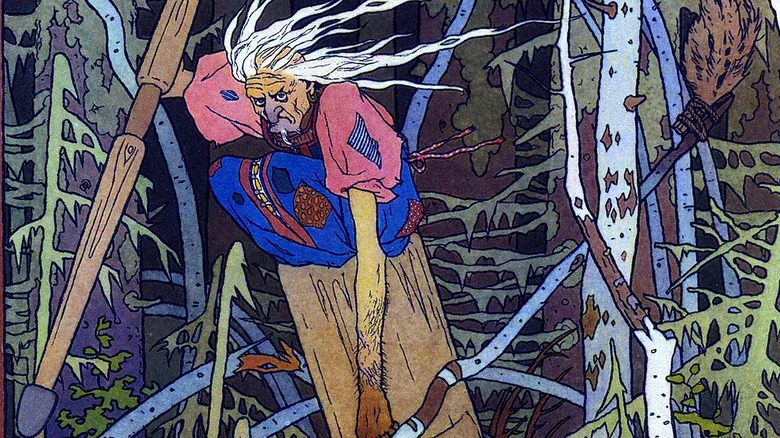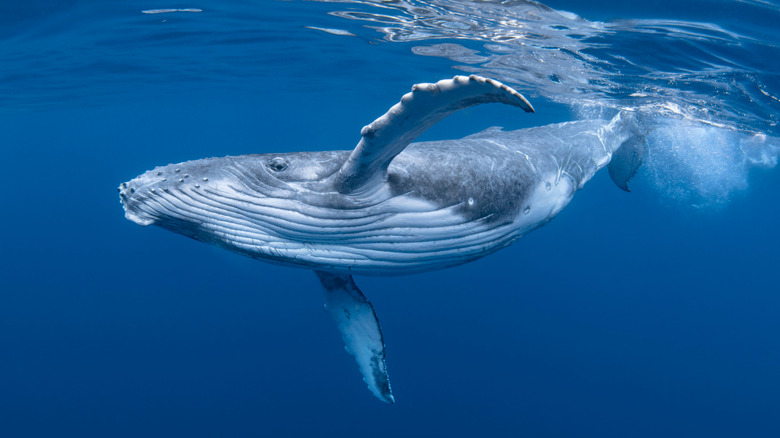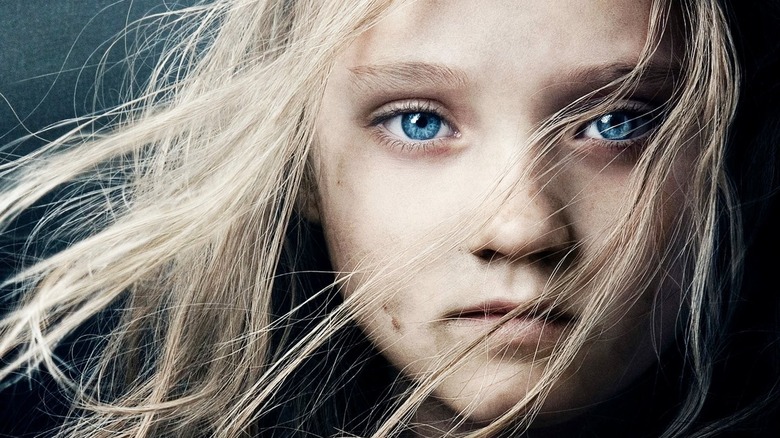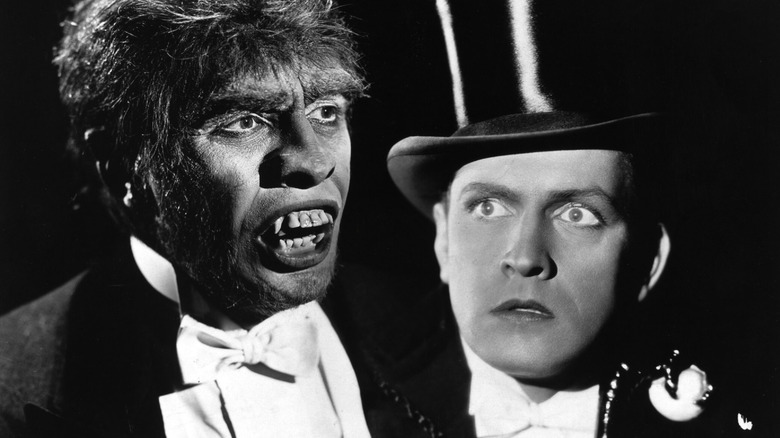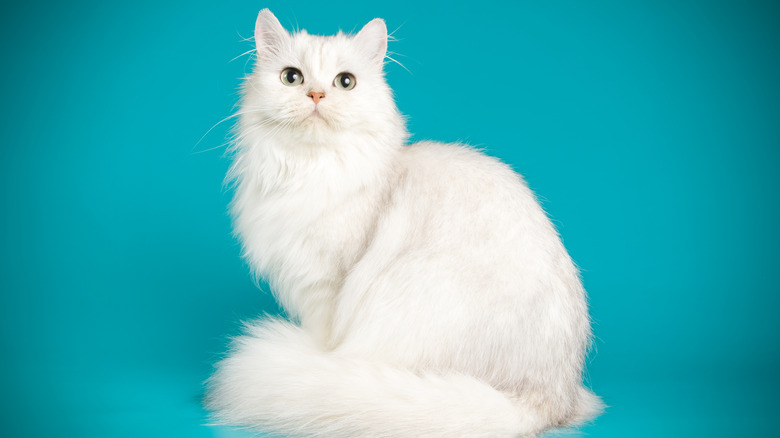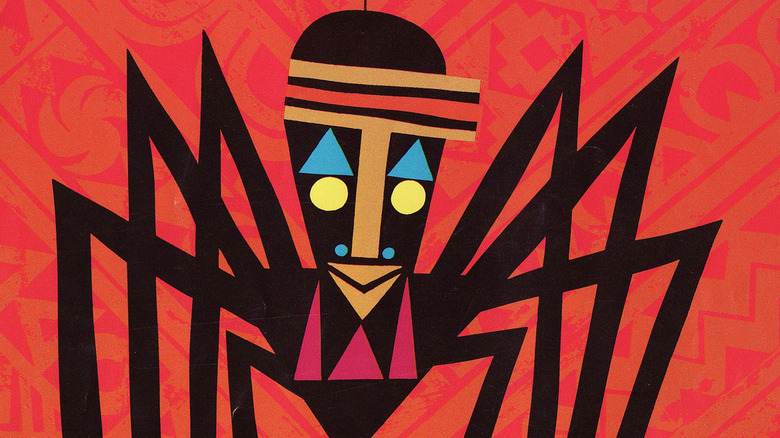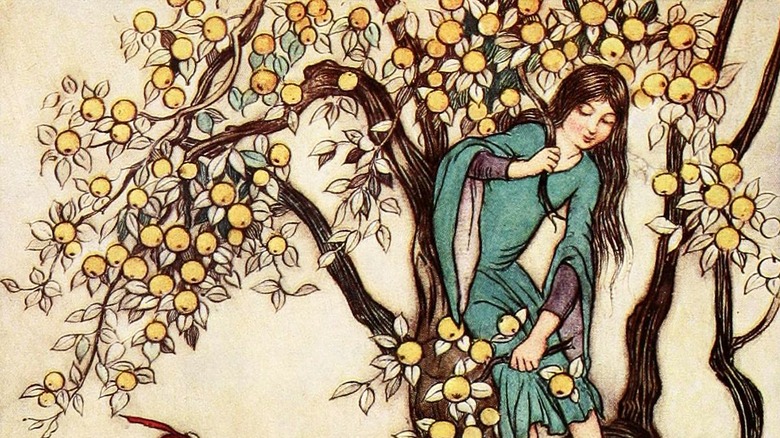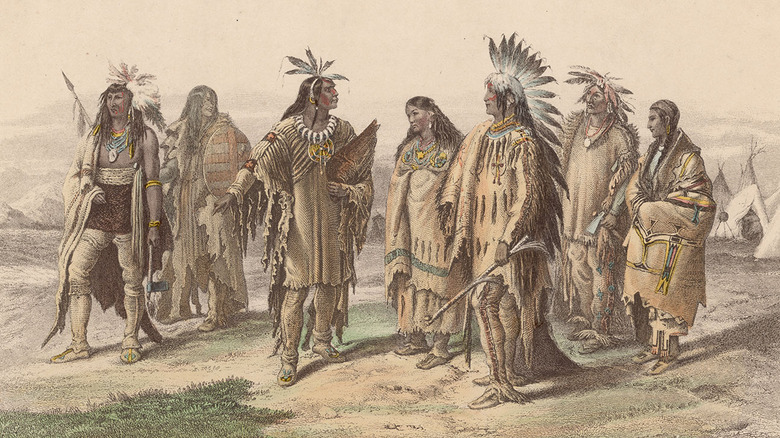Weirdest Stories Disney Should Turn Into Movies Next
Ever since Walt Disney Studios released "Snow White and the Seven Dwarfs" in 1938, the company's animated films have been a mainstay of both popular culture and the film industry. From the classic "Lion King" to the wildly-acclaimed "Frozen," Disney has scored hit after hit by taking popular fairy tales and other copyright-free works from the public domain and translating them to the silver screen in one form or another.
"Lion King" was famously inspired by Shakespeare's "Hamlet," while "Moana" utilized the Polynesian myth of Māui, but this trend begs the question: What other stories will Disney adapt in the years to come? Here are some weird and wonderful tales that might easily inspire the next decade of animated storytelling.
Gulliver's Travels
Written by Jonathan Swift and published in 1726, "Gulliver's Travels" has already had adapted into film several times, most recently with Jack Black in 2010. What it hasn't had, however, is that classic dose of Disney magic.
The stories of retired surgeon Captain Lemuel Gulliver's "Travels into Several Remote Nations of the World" is ripe for an animated movie in the classic Disney style. The story is a satire that sees Lemuel's follies and rigid customs mocked and challenged as he visits the diminutive Lilliputians and gargantuan citizens of Brobdingnag.
The exotic locations and Lemuel's clear character arc make it a perfect fit for the type of rich, imaginative animation and design work that Disney used for films like "Peter Pan," "Alice in Wonderland," and "Treasure Planet." It's also easy to imagine how the film's music could help define the many peoples that Gulliver visits: light, quick, happy tunes filled with flutes and wind instruments for the Lilliputians and deep, brassy, thunderous bellows for the giants alongside trumpets and other horned instruments.
Though Disney seems pretty dedicated to utilizing CGI animation for their animated films going forward, "Gulliver's Travels" would be a perfect choice if, or maybe when, they decide to delve back into the world of traditional cartoons.
The Mythological Hercules
In 1997, Disney released the film "Hercules." In 2015, Disney released "Cinderella," beginning their ongoing series of live-action remakes of their most popular animated films. With multiple films already released, and more coming up the pipeline, it's only a matter of time before Hercules gets its turn at the wheel, so what direction should it go?
The director of 2020's "Mulan," Niki Caro spoke at length about how, because the animated film already exists, they wanted to do something different and attempt to adhere closer to the original Chinese ballad. Though opinions on how well they fulfilled this vision may vary, a similar idea could work quite well for Hercules.
The fact remains that Disney's animated classic already exists, and was quite liberal with its alterations to the standard Greek myths its character came from. If the studio wants to make a film that's more than just "Hercules" with real people, adhering more closely to those original myths could be a great way to do it.
Quetzalcoatl
"Hercules" isn't the only myth that Disney should consider adapting. Known as "Quetzalcóatl" to the Aztek and "Kukulcán" to the Maya, this feathered serpent god was originally associated with vegetation, but grew in popularity and influence until he was considered the god of the morning and evening star, death and resurrection, priests, calendars, books, craftsmen, and goldsmiths.
Quetzalcóatl was one of the most important gods in Aztec mythology because he had a direct hand in the creation of the current universe of mankind. After the death of the previous reality, the Feathered Serpent descended into "Mictlan," the Aztec underworld, recovered the remains of the previous universe, and sprinkled them with his blood to create life anew.
In other myths, he was said to have refused human sacrifices, a custom the Aztecs are rather infamous for, in favor of snakes, birds, and butterflies in their stead. He is also said to have ruled over the lands until night god "Tezcatlipoca" used black magic to exile him to the east until Quetzalcóatl could finally make his prophesied return and free his people at last.
Though there's no single myth or story that would seem to work best for an adaptation, this hasn't stopped them before, most notably in Larry Cohen's low-budget horror flick "Q: The Winged Serpent." Going beyond the genre trappings and making things more kid-friendly, however, Disney could find inspiration in the rich cultural history and artistry of the Aztecs and the Mayans.
The Story of Henry VIII
Henry VIII was a complicated figure. The man created his own church just so he could "legally" and "morally" leave his first wife, Catherine of Aragon. He then proceeded to marry five other women, kill two of them, and divorce another before his final wife simply outlived him. If that wasn't enough, the religious schism he created by creating his own church left England in a state of bloody turmoil after his death as his Catholic daughter Mary warred with her Protestant half-sister Elizabeth I over both Britain's throne and its church.
Though this story may not seem ripe for a Disney adaptation, there is another version that could serve as the "Hamlet" to Disney's "Lion King": Shakespeare's "Henry VIII." By far one of his lesser known productions, the play follows the king as he falls victim to the advice of his Lord Chancellor and to his own human folly. Within its acts, Henry divorces Catherine, marries Anne Boleyn, and sees the birth of their daughter, the famed Elizabeth I.
There are two easy directions Disney could take this story. First, they could use it as a loose inspiration for a roughly original story that could, for example, feature analogs of Elizabeth and Mary as they fight due to the failures of their father. On the other hand, Disney could continue their series of villainous live-action feature films with Henry VIII as its primary protagonist.
Baba Yaga
A monstrous figure from Slavic folklore, Baba Yaga is a functionally immortal ogress who jealously guards the fountains of the water of life, often with two or three sisters who all share her name.
Just to make it clear they are monsters, however, the Baba Yagas' favorite meal is freshly cooked children and their victims' skulls often find themselves as fence toppings. They also like to leave tempests in their wake as they follow Death around in their magical flying kettles, eating the souls of the newly departed. Swell folk.
Baba Yaga is such the stuff of nightmares, in fact, that it's the nickname for Keanu Reeves' John Wick.
A horrifying villain, Baba Yaga would be the perfect villain for a new Disney or Pixar animated film, and given her appearance in hundreds of Slavic folk and fairy tales, the filmmakers would have an abundance of material to adapt or ignore at their discretion. Who knows? If she proves popular enough, she could maybe carry her own movie a la "Cruella" and "Maleficent."
Humphrey the Whale
This next story actually happened, and it could be brought to the silver screen in a number of wonderful ways. In 1985, the people of San Francisco discovered a humpback whale who had been separated from his pod and made its way underneath the Golden Gate Bridge and into the San Francisco Bay.
Soon nicknamed Humphrey, the whale's visit began as a fun, rare experience for sightseers from all around the world, but the situation took a grim turn when Humphrey began swimming up the Sacramento River in an attempt to return to the ocean. As he continued along the fresh water river, the lack of seawater made Humphrey sick and further endangered his life as he continued traveling upstream.
Eventually, a team of scientists and Coast Guard service members managed to guide Humphrey back out to sea by using recordings of whales played through an experimental underwater speaker. After 26 days, Humphrey was free. Five years later, Humphrey returned to the Bay and accidentally beached himself on a low tide until scientists managed to free him once again after three days.
Humphrey's story could be adapted in a number of Disney styles. It could be a "Finding Nemo"-style animated film about the fantastical circumstances that separated Humphrey from his pod and lead him to his undersea adventure in California. Or, it could be a family-oriented live-action film that follows the team of scientists in their efforts to free the whale and help it find its way. Remember what a phenomenon "Free Willy" became in the early '90s? This seems primed to be a similarly heartwarming family tale.
Les Miserables
Though far from the strangest story on this list, Victor Hugo's "Les Misérables" is perhaps the strangest choice. Not only has it already been adapted as an award winning musical and a theatrical blockbuster, it's also a far cry from the kinds of stories Disney usually likes to use for inspiration. But then again, so was "The Hunchback of Notre Dame."
That Disney movie was based on a novel from 1831 written by the very same Victor Hugo who wrote "Les Misérables," and it lead to some of the most unique soundtracks, set pieces, and visuals that Disney has ever produced. It was an unusual choice that lead to an unusual movie that showcased the studio's intense creativity in a way few other films ever would.
Disney would have to take the same creative freedoms they did with "Hunchback" to achieve that PG rating, but the central conflict between Valjean and Javert and their conflicting ideas of law and love are still ripe for an animated adaptation in the same style.
The project would not be without risk. The film would have to ditch music all-together or create entirely new, original songs that would constantly be compared to the musical — but if they managed to pull it off, this movie could be one for the ages.
The Strange Case of Dr Jekyll and Mr Hyde
Though multiple live-action versions of Robert Louis Stevenson's famous novel have been created throughout the years, an animated release of "The Strange Case of Dr. Jekyll and Mr. Hyde" holds the potential to blow the rest of them out of the water.
As many readers likely already know, Dr. Henry Jekyll creates a serum that is supposed to separate the good and evil parts of his personality into two separate beings, but instead, the potion caused Jekyll to transform into the evil and hideous Mr. Hyde. The transformations eventually become more frequent, harder to control, and more difficult to end, until Mr. Hyde finally manages to murder someone and make the transformation permanent.
The potential for a classically animated "cartoon" musical adaptation of this story is enormous. With this unique style of film, the filmmakers could change far more than just the man's appearance when Jekyll changes into Hyde. The style, sound, and production of the music could shift completely between the two, and the very animation itself could adopt a completely different style depending on which persona is in control.
The two contrasting visual depictions could literally clash as the two personas battle for control. As the story continues, the style used to depict Dr. Jekyll's perception of reality could slowly grow increasingly similar to Mr. Hyde's until it finally, completely shifts as Hyde gains permanent control.
Essentially, a creative animated adaptation could breathe new life into this story in a way that no other medium possibly could.
The White Cat
"The White Cat," by Madame d'Aulnoy, is easily the weirdest story on this list.
Though still quite healthy, a king must choose one of his three sons as his heir and buys time by giving them three, year-long quests to find the smallest puppy, the softest fabric, and the prettiest bride. Whoever does all three shall be king.
They set off, but the youngest is diverted during a storm to a magical castle that is managed by floating hands and ruled by a talking white cat. The pair become fast friends and spend all three years together as the cat magically gives the prince exactly what he needs.
When the prince must find a bride, however, he discovers he's fallen in love with the cat, who tells the prince its grand solution: cut the feline's head off and cast it into a fire. Once the horrified prince finally agrees, the cat transforms into the most beautiful woman in the world. She was a cursed princess who happens to rule six kingdoms, allowing all three princes and their father to live happily ever after as kings.
Yes. That is the actual story.
Though utterly ridiculous, the fairytale reads like a strange blend of "Beauty and the Beast" and the "Aristocats." The castle is perfect for the kind of whimsical antics Disney's films are known for, and the resulting film could be a wonderful addition to its vast library. Come on, Disney. Make the White Cat the next Disney Princess.
Anansi the Spider
Famous throughout Africa and the Caribbean, Anansi the Spider, also called Ananse, is one of the most important mythological figures in Western Africa. Though both he and his wife can change forms, Anansi is most often depicted as a spider and as the embodiment of knowledge, teaching, wisdom, and trickery.
Anansi often tricks his "victims" into learning moral and ethical lessons and is commonly depicted as the keeper of stories and the source of most of man's knowledge. Some versions even depict Anansi as a sort of "Fate" who can weave the stories of people's lives like a spider's web.
The figure has already been popularly adapted in a story book titled "Anansi the Spider: A Tale from the Ashanti" that was both written and illustrated by Gerald McDermott, showing that the trickster still has wide-spread appeal today. With Disney increasingly looking to other cultures for inspiration with movies like "Coco" and "Luca," Anansi and his related mythology seems almost inevitable, whether as the protagonist or as a significant supporting character like Maui in "Moana."
One Eyes, Two Eyes, Three Eyes
Long ago, there was an abusive woman with three daughters named "One Eyes," "Two Eyes," and "Three Eyes." Because Two Eyes was the only one of the four who looked normal, the other three treated her horribly. They would insult her, barely feed her, and push her about as they pleased.
Thankfully, a fairy godmother took pity on the poor girl and made sure to heal, feed, and spend time with her by giving her a magic goat. When the girl's mother and sisters discovered the goat, however, they killed it, and under the fairy's instruction, Two Eyes buried its remains in a field.
The next day, an enormous, bejeweled tree sprung up where the goat had been buried, and only Two Eyes could retrieve its marvelous fruit. Because of this, when a passing knight marveled at the tree's fruit, only Two Eyes could retrieve it for him and thus win his hand in marriage and live happily ever after. When the two sisters presented themselves to Two Eyes years later, the sister greeted them with a kindness they had never shown her and took care of them.
This story would probably work best as an opening short like "Bao" and "Loop" that's presented before a feature film. It's a quick and relatively simple story which promises striking visuals, perfect for a wordless animated short that begins with the sisters' birth and ends with their reunification.
Three Brothers Who Followed the Sun
Another culture Disney could look to is the Iroquois peoples of the Northeastern regions of what is now the United States. A unique league of Native American tribes famous for living in wooden longhouses, the Iroquois' many legends could perhaps inspire numerous cinematic creations.
One example, "Three Brothers Who Followed the Sun," follows three mighty hunters who grow bored of their normal lives and decide to follow the sun west to discover where it sleeps at night. The brothers brave many strange dangers on their journey, until finally arriving at the sun's home at the edge of the world, though the eldest did not survive the trip.
The two living brothers discover their fallen sibling's spirit within the house of the sun and wish it well as it leaves for the afterlife. The brothers then meet with the sun who took their earthly, human bodies, and made them super-human. Thus empowered, the brothers return home in moments but grow even more disconnected from their mortal kinsmen, ultimately deciding to return to the sun for the rest of time.
In the right hands, this story could be adapted into an animated film with a unique artistic style that could draw heavily from the Iroquois and other Native American peoples. Its travel narrative is the perfect setting for an adventure story like "Brother Bear" that could show how the brothers grow as people throughout their travels until they finally reach "enlightenment," both figuratively and literally.
